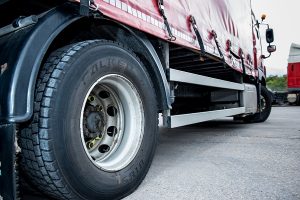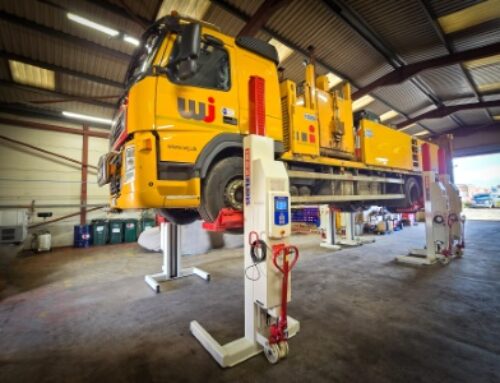Falken’s tyre selection tips
 Falken Tyre has emphasised the importance of correct tyre selection as HGV options on the market increase, with patterns specifically developed for drive, steer and trailer applications.
Falken Tyre has emphasised the importance of correct tyre selection as HGV options on the market increase, with patterns specifically developed for drive, steer and trailer applications.
In addition, the use of tyres optimised for winter and summer need to be taken into consideration, the company says, as well as factors such as performance, durability, fuel efficiency and overall cost effectiveness.
“The correct tyre selection is important for safety, stability, and durability,” said Robert Czarnecki, supervisor product planning at Falken Tyre.
“If a tyre is mounted in the wrong position for its designation, it may lead to higher wear rates that reduce the tyre’s lifespan, or could reduce stability and therefore impact safety. Winter and summer tyre products have fundamental compound differences that could lead to extra fuel consumption, as well as reduced braking performance if not used correctly.”
Today, tyres are developed to specifically suit the performance requirements of each axle – drive, steer and trailer – with the construction, compound and pattern of the tyres optimised for the assigned tasks, and therefore different on each.
Czarnecki explained: “Drive tyres are designed with tread patterns that have large contact areas to ensure optimal traction and stability, as well meet load capacity requirements. For example, the Falken BI851 has an open and deep tread pattern with a high number of lateral grooves to provide outstanding grip, even in mud and snow applications.”
Meanwhile, steer tyres are designed to convey the applied steering thrust for optimal handling and wear.
“For steer applications, super wide and rigid shoulders help to provide excellent road stability, handling and even wear, all of which is important for this application. Tyres such as Falken’s RI151 have these characteristics,” he said.
Trailer tyres are designed to optimise stability and wear, while performing under a variety of loads.
“While the tread pattern and construction differ for each application in order to deliver the appropriate stability and wear characteristics, some steer tyres are suitable for trailers, which provides a level of flexibility for operators, such as the Falken RI128,” added Czarnecki.
 In addition to the tyres for differing applications, summer and winter tyres also needed to be taken into consideration, he said.
In addition to the tyres for differing applications, summer and winter tyres also needed to be taken into consideration, he said.
“Cold weather tyres have a more sophisticated compound technology that enables them to operate effectively at lower temperatures. A softer compound with a higher silica content ensures better safety in wintery and wet conditions.
“The difference between winter and summer commercial vehicle tyres is less than passenger cars, as in an HGV the weight of the vehicle ensures sufficient contact pressure between the tyre and road surface for proper traction, even in wet and cold conditions. However, the different patterns do provide a grip advantage in adverse conditions.
“The Falken SI011, for example, has deep and highly effective zig-zag sipes at different angles to offer more grip on winter roads, while summer patterns will provide a fuel consumption advantage.”
Winter tyres have a softer compound, Czarnecki explains, which becomes less effective in higher temperatures, so those above 10 – 15°C. This could lead to longer braking distances and higher fuel consumption, which is not optimal for fleet operators. Meanwhile, summer tyres with less silica will become stiffer in colder conditions, which compromises braking performance and wet grip.
Falken says its tyre compounds have been created for specific applications using Advanced 4D Nano Design Technology, which has been developed by parent company Sumitomo Rubber Industries (SRI).
Through research into the molecular structure of tyre materials using particle accelerators and advanced simulation computers, says the firm, SRI has succeeded in simulating and controlling the molecular structure of rubber compounds used for tyres at nano level.
For example, it has analysed how and where superfluous heat is generated in the tyre, which typically results in loss of energy and increases rolling resistance, which in turn is responsible for fuel consumption. Advanced 4D Nano Design Technology has helped minimise this at the molecular level, says Falken, and develop compounds that are ideally suited for both summer and winter conditions.
“Choosing tyres may be more complicated with the different applications and winter/summer options, but overall making the right choice and using a tyre suited to the operating conditions will optimise braking and wet performance, wear and durability, as well as fuel consumption, resulting in a positive impact on safety and the bottom line,” concluded Czarnecki.











